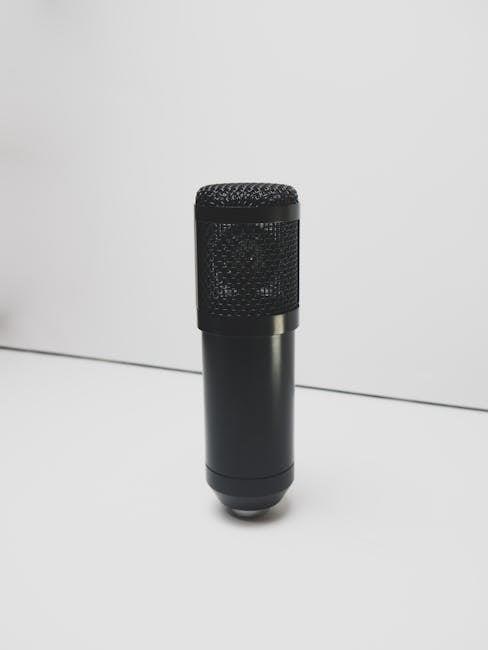Denim weight, measured in ounces per square yard, determines fabric durability, comfort, and style. Understanding this factor helps you choose the perfect denim for your needs, balancing strength and flexibility.
What is Denim Weight?
Denim weight refers to the fabric’s weight per square yard or meter, typically measured in ounces (oz) or grams (g). It indicates how heavy or light the denim is, influencing its durability, flexibility, and comfort. Lighter denim (under 12 oz) is softer and more breathable, while heavier denim (over 16 oz) is sturdier and more durable. The weight determines how the fabric drapes, feels, and fades over time, making it a critical factor in choosing denim for specific uses, from casual wear to workwear. Understanding denim weight helps in selecting the right fabric for desired comfort, style, and longevity.
Why Denim Weight Matters
Denim weight significantly impacts the fabric’s performance, comfort, and aesthetic appeal. Lighter weights (under 12 oz) offer breathability and softness, ideal for warm weather, while heavier weights (over 16 oz) provide durability and structure. The weight determines how denim drapes, fades, and withstands wear, making it crucial for balancing style and functionality. Heavier denim is tougher and less prone to tears, while lighter denim prioritizes comfort and flexibility. Understanding weight helps tailor choices to specific needs, ensuring the right blend of comfort, durability, and style for various applications, from casual wear to workwear.

How Denim Weight is Measured
Denim weight is measured in ounces per square yard (oz/yd²) or grams per square meter (g/m²), indicating fabric density and thickness, which affect durability and comfort.
Ounces per Square Yard (oz/yd²)
Ounces per square yard (oz/yd²) is the standard unit for measuring denim weight, representing the fabric’s weight per square yard. This measurement helps determine the fabric’s thickness, durability, and flexibility. Lighter denims, typically under 12 oz, are ideal for summer clothing, offering softness and breathability. Mid-weight denims (12-16 oz) provide a balance between comfort and strength, while heavier options (over 16 oz) are more durable and often used for workwear or premium jeans. Understanding oz/yd² helps in selecting the right denim for specific needs, ensuring optimal comfort and longevity.
Grams per Square Meter (g/m²)
Grams per square meter (g/m²) is another common unit for measuring denim weight, indicating the fabric’s weight per square meter. This metric is often used alongside ounces per square yard, with 1 oz/yd² roughly equal to 34 g/m². Denim fabrics typically range from 150 g/m² (lightweight) to 600 g/m² (heavy-duty). Lighter fabrics (under 300 g/m²) are ideal for summer wear, offering softness and breathability, while heavier options (over 400 g/m²) provide durability and structure, often used in workwear or premium jeans. Understanding g/m² helps in selecting fabrics that balance comfort and strength, making it a crucial factor in choosing the right denim for specific needs.
Conversion Between Units
Converting denim weight from ounces per square yard (oz/yd²) to grams per square meter (g/m²) is straightforward. Since 1 oz/yd² equals approximately 34 g/m², multiplying the weight in ounces by 34 provides the equivalent in grams. For example, 10 oz/yd² denim weighs about 340 g/m². This conversion ensures consistency across different measurement systems, allowing seamless comparison of fabrics globally. Understanding this relationship helps consumers and manufacturers communicate effectively, ensuring the right fabric weight is selected for specific applications. Accurate conversion simplifies the process of matching fabric properties to desired performance, whether for lightweight summer wear or heavy-duty workwear.

Categories of Denim Weight
Denim weight categories include lightweight (under 12 oz), mid-weight (12-16 oz), heavyweight (over 16 oz), and extra-heavyweight (20 oz+), each suited for different uses and preferences.
Lightweight Denim (Under 12 oz)
Lightweight denim, typically under 12 oz, is ideal for warm weather and offers a soft, breathable feel. It drapes well, making it perfect for shirts, dresses, and light summer pants. However, its durability is lower compared to heavier weights, and it may not hold up as well over time. Despite this, its comfort and versatility make it a popular choice for casual, relaxed clothing. Lightweight denim is great for those prioritizing ease and flexibility but may not be the best option for long-lasting, hard-wearing garments;
Mid-Weight Denim (12-16 oz)
Mid-weight denim, ranging from 12 to 16 oz, strikes a balance between comfort and durability. It is versatile and suitable for various uses, from casual wear to work attire. This weight provides a sturdy fabric that holds its shape well while maintaining breathability. Mid-weight denim is ideal for cooler weather and offers a classic feel. It is less prone to wrinkles and tears compared to lighter weights but remains comfortable for everyday use. This range is a popular choice for jeans and jackets, offering both style and practicality without the stiffness of heavier denim.
Heavyweight Denim (Over 16 oz)
Heavyweight denim, exceeding 16 oz, is known for its exceptional durability and robust texture. This dense fabric is ideal for creating long-lasting, rugged apparel. It offers excellent resistance to wear and tear, making it perfect for workwear or heavy-duty applications. Heavyweight denim often features a stiff finish that softens with time, providing a classic, timeless look. While it may feel less comfortable initially, its strength and ability to develop unique fade patterns make it a favorite among denim enthusiasts. This weight is particularly suited for colder climates due to its warmth and structural integrity, ensuring both functionality and style.
Extra-Heavyweight Denim (20 oz and Above)
Extra-heavyweight denim, weighing over 20 oz, is the heaviest and most durable option available. This dense fabric is often used for workwear or specialty denim products, offering unparalleled strength and longevity. It is highly resistant to abrasion and tears, making it ideal for heavy-duty tasks. The stiff, rigid texture of extra-heavyweight denim requires a long break-in period but rewards with a unique patina over time. While it can feel cumbersome and less breathable, its exceptional durability and classic aesthetic appeal make it a favorite among denim purists seeking a long-lasting, high-quality fabric for specific purposes or statement pieces.

Benefits and Drawbacks of Each Weight
Denim weights offer unique benefits and drawbacks, with lighter fabrics providing comfort and heavier options offering durability. Each weight caters to different preferences and needs, balancing comfort, strength, and style.
Lightweight Denim: Pros and Cons
Lightweight denim, typically under 12 oz, offers exceptional comfort and breathability, making it ideal for warm weather and casual wear. It drapes softly, providing a relaxed fit and easy movement. However, its lighter weight means it is less durable and prone to wear and tear compared to heavier options. Fading occurs more quickly, and the fabric may lack structure, resulting in a less rugged appearance. Despite these drawbacks, lightweight denim is perfect for summer clothing, layering pieces, or those seeking a lightweight, laid-back style. Its versatility in shirts, dresses, and lightweight pants makes it a popular choice for everyday wear.
Mid-Weight Denim: Pros and Cons
Mid-weight denim, typically ranging from 12 to 16 oz, strikes a balance between comfort and durability. It offers a versatile option suitable for various occasions and seasons, providing a structured yet comfortable fit. This weight is ideal for everyday wear, as it holds its shape well while maintaining flexibility. The fabric is durable enough to withstand wear and tear but light enough for warmer weather. However, it may feel stiffer initially compared to lightweight denim and can be less breathable in extreme heat. Mid-weight denim is a popular choice for jeans, jackets, and other garments, offering a classic look with long-lasting quality. Its adaptability makes it a favorite for many denim enthusiasts seeking practicality and style.
Heavyweight Denim: Pros and Cons
Heavyweight denim, exceeding 16 oz, is known for its exceptional durability and robust structure. It offers a stiff, rugged feel that many enthusiasts appreciate, particularly for workwear or high-impact activities. The dense weave ensures minimal fading, preserving a sharp, clean appearance over time. However, this weight can feel heavy and less breathable, making it less suitable for warmer climates or casual wear. Break-in time is longer, requiring patience to achieve comfort. Despite these cons, heavyweight denim is prized for its longevity and ability to develop unique, dramatic fades with wear. It’s a top choice for those prioritizing durability and a classic, timeless look.
Extra-Heavyweight Denim: Pros and Cons
Extra-heavyweight denim, typically 20 oz and above, is the most durable option, offering unparalleled strength and resistance to wear. It’s ideal for workwear or enthusiasts seeking a rugged, long-lasting fabric. The dense weave minimizes tears and abrasion, while the heavy weight provides structure and a classic, stiff feel. However, this weight is often uncomfortable for everyday wear due to its heaviness and reduced breathability. It’s less flexible, making it challenging for active use. Additionally, the break-in period is extensive, requiring consistent wear to soften. Despite these drawbacks, extra-heavyweight denim is cherished for its timeless appeal and ability to develop deep, unique fades over time.

Choosing the Right Denim Weight
Selecting the ideal denim weight involves considering seasonal needs, activity levels, and personal style. Lighter fabrics suit summer and comfort, while heavier options offer durability for long-term use.
Seasonal Considerations
Seasonal considerations play a significant role in choosing denim weight. Lightweight denim, typically under 12 oz, is ideal for warmer weather, offering breathability and comfort during summer. Its soft texture and light drape make it perfect for shirts, dresses, or lightweight pants. In contrast, mid-weight denim (12-16 oz) strikes a balance, suitable for spring and fall, providing comfort without compromising durability. Heavyweight denim (over 16 oz) is best for colder months, offering insulation and robustness against harsh weather conditions. Understanding these seasonal preferences helps in selecting denim that not only feels right but also performs optimally throughout the year.
Activity and Use Case
Activity and use case significantly influence the choice of denim weight. For active lifestyles, such as outdoor work or sports, heavyweight denim (over 16 oz) is recommended due to its durability and resistance to wear. Mid-weight denim (12-16 oz) is versatile and ideal for everyday wear, offering a balance between comfort and strength. Lightweight denim (under 12 oz) is better suited for casual, low-impact activities like lounging or summer outings. Choosing the right denim weight ensures that the fabric meets the demands of its intended use, enhancing both performance and longevity. This consideration helps tailor the denim’s functionality to specific needs, ensuring optimal comfort and durability.
Style and Aesthetic Preferences
Denim weight plays a crucial role in achieving desired style and aesthetic preferences. Lightweight denim offers a soft, relaxed fit, ideal for casual summer outfits or creating a trendy, vintage look. Mid-weight denim provides a balanced drape and structure, making it versatile for various fashion styles. Heavyweight denim, with its stiff fabric, is favored for its classic, rugged appeal and dramatic fade patterns. The weight of the denim can also influence how it drapes on the body, with lighter weights offering a more fluid silhouette and heavier weights creating a structured, form-fitting look. Ultimately, the choice of denim weight allows individuals to tailor their garments to match their personal style and aesthetic goals.

Impact of Denim Weight on Durability
Denim weight significantly affects durability, with heavier weights offering greater resistance to wear and tear, while lighter weights are less robust but more flexible.
Lightweight Denim Durability
Lightweight denim, typically under 12 oz, offers comfort and breathability but lacks the durability of heavier weights. It is prone to wear and tear, with faster fading and a shorter lifespan. While it drapes well and is ideal for warm weather, it may not withstand heavy use. However, for casual, non-strenuous activities, lightweight denim provides a stylish and comfortable option. Proper care, such as gentle washing, can help extend its life, but it remains less resilient compared to mid or heavyweight denim.
Mid-Weight Denim Durability
Mid-weight denim, typically between 12 to 16 oz, strikes a balance between comfort and durability. This weight is resistant to wear and tear, making it suitable for daily use while maintaining a soft feel. It is less prone to wrinkles and holds its shape better than lighter weights. Mid-weight denim is versatile, working well for both casual and slightly formal settings. Its moderate thickness ensures longevity, with slower fading compared to lightweight options. Proper care, such as avoiding excessive washing, can further enhance its durability, making it a practical choice for those seeking a balance between style and resilience.
Heavyweight Denim Durability
Heavyweight denim, exceeding 16 oz, is renowned for its exceptional durability and long-lasting quality. This robust fabric resists wear and tear effectively, making it ideal for workwear or heavy-duty applications. The dense weave minimizes the risk of rips and tears, while its thickness provides added warmth. Heavyweight denim is less prone to fading, ensuring a more consistent appearance over time. Although it may feel stiffer initially, it softens with use, developing a unique patina. Proper care is essential to maintain its integrity, but its resilience makes it a worthwhile investment for those prioritizing longevity and rugged style.

Denim Weight and Fading
Denim weight significantly influences fading patterns. Heavier denim fabrics tend to produce more dramatic and defined fades due to their thicker weave and richer indigo dye saturation.
How Weight Affects Fade Patterns
Denim weight plays a crucial role in determining fade patterns. Heavier denim fabrics, with their thicker weaves, tend to retain more indigo dye, resulting in deeper, more pronounced fades over time. Lighter denim, being softer and less densely woven, fades more subtly and evenly. The tighter weave of heavyweight denim restricts dye migration, creating sharper contrast in fade areas, while lightweight denim allows for a softer, more spread-out fade. This variation makes heavier denim popular for those seeking dramatic fade effects, whereas lighter denim offers a more relaxed, vintage look. Understanding this relationship helps in selecting the right weight for desired aesthetic outcomes.
Lightweight vs. Heavyweight Fades
Lightweight denim fades softly and evenly, creating a subtle, washed appearance. Its loose weave allows dye to migrate easily, resulting in a more relaxed look. Heavyweight denim, with its dense weave, produces sharper, more defined fades that stand out. The indigo retention in heavier fabrics leads to dramatic contrast, making them ideal for those seeking bold style statements. Lightweight fades are perfect for a casual, vintage vibe, while heavyweight fades cater to enthusiasts of rugged, high-contrast aesthetics. The choice between the two depends on the desired visual impact and personal style preferences.

Popular Denim Weights by Brand
Levi’s offers denim weights ranging from lightweight (8-12 oz) to heavyweight (14-16 oz), while other brands provide similar options, catering to diverse style and durability preferences.
Levi’s Denim Weights
Levi’s, a leader in denim, offers a range of weights to suit various needs. Their lightweight options, typically between 8-12 oz, are ideal for summer shirts and casual wear, offering breathability and comfort. Mid-weight denim, ranging from 12-16 oz, strikes a balance between durability and flexibility, making it perfect for everyday jeans. For those seeking robust durability, Levi’s heavyweight denim, often 14-16 oz and above, provides a sturdy feel and classic fade patterns. This variety ensures Levi’s caters to diverse preferences, whether for style, comfort, or longevity, making them a go-to choice for denim enthusiasts worldwide.
Other Major Brands’ Denim Weights
Brands like Calvin Klein and Diesel offer lightweight denim (8-12 oz) for summer wear, blending style with comfort. GAP and Wrangler provide mid-weight options (12-16 oz), ideal for everyday use, combining durability and flexibility. Premium brands such as G-Star Raw and A.P.C. feature heavyweight denim (14-16 oz and above), emphasizing durability and classic fades. Each brand tailors its denim weights to specific styles and uses, ensuring a wide range of choices for consumers seeking the perfect balance of comfort, style, and longevity in their denim purchases. This diversity allows consumers to select denim that aligns with their lifestyle and aesthetic preferences, making denim a versatile and timeless fabric choice.
Understanding denim weight is crucial for selecting fabric that balances durability, comfort, and style, ensuring your denim choices meet your needs for any occasion and preference.
Final Thoughts on Denim Weight
Key Takeaways
Denim weight significantly impacts wearability, durability, and style. Lightweight denim (under 12 oz) is ideal for warm weather and comfort, while mid-weight (12-16 oz) offers a balance of durability and flexibility. Heavyweight denim (over 16 oz) provides exceptional strength and classic fades, making it suitable for long-lasting, rugged use. Understanding these categories helps tailor choices to specific needs, ensuring optimal comfort and longevity. Seasonal considerations, activity, and aesthetic preferences are crucial factors in selecting the right denim weight, making it a key determinant in enhancing your wardrobe’s functionality and personal style.




